
views
- If you feel a pop in your finger and the pain is fairly intense, your finger is probably broken and you should see a doctor.
- A broken knuckle will swell up and bruise 5-10 minutes after the injury. If there’s no swelling or bruising, it’s probably not broken.
- Go to the ER if you can see bone or if the pain is so bad that you can’t complete normal tasks.
Initial Assessment
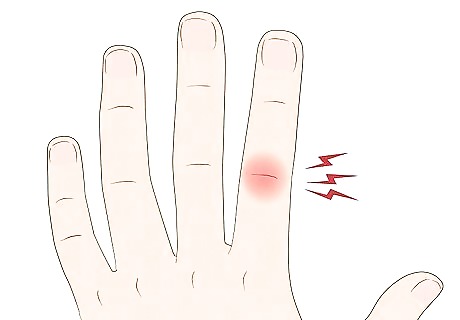
Severe and immediate pain A broken knuckle will be accompanied with severe, immediate pain. Right when the injury occurs, you will experience a sharp pang in your hand which will be followed by an intense throbbing feeling. Depending on your body’s tolerance for pain, the feeling can be debilitating and force you to stop whatever you’re doing. If your knuckle only has a minor fracture, the pain may not be as severe, but it’ll still hurt very badly. As soon as the pain comes on, stop using your hand as you could further injure your knuckle.
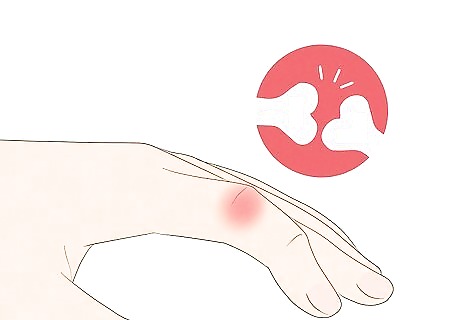
Popping sensation People who break their knuckle often report feeling a popping or snapping sensation in their hand at the exact moment of the injury. This feeling is caused by the bones at the knuckle joint popping out of their original place. If you felt a pop or snap, it’s a good sign your finger is broken. If your hand is indeed broken, see a doctor soon. You may need to have a bone put back into place, get a splint, have surgery, or get a cast. Technically, you can’t actually break your knuckle—your knuckle is a joint where two bones meet. When you “break your knuckle” it’s actually one of your phalanges, which are the small bones inside of each finger. The popping sensation isn’t always present when a knuckle is broken. Whether or not you’ll experience a popping feeling depends on the severity of your fracture.
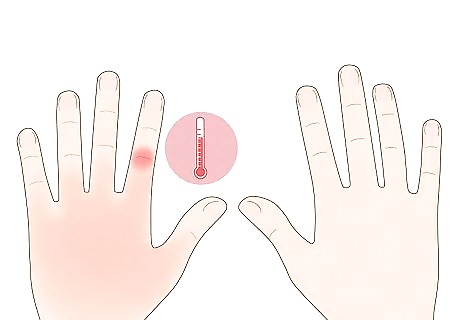
Hot sensation The moment you break your knuckle, the blood will start flowing towards the area of the fracture causing your hand to get hot. Check the temperature in your injured hand and then your other hand. If your injured hand feels much warmer than the other one, your knuckle could be broken.
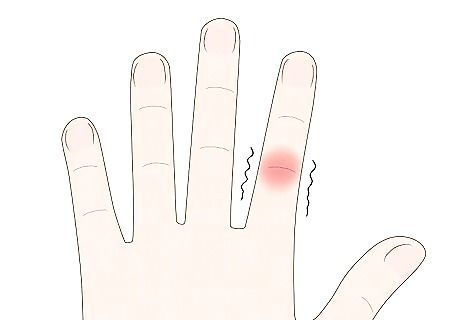
Numbness If you touch the injured area and you don’t feel it the same way you normally would, it’s a good indicator that your finger is broken. If you only jammed your finger or the injury were superficial, you’d still be able to feel sensations. You may not notice your finger is numb until the initial pain subsides or you put a cold compress on the area to soothe the pain.
Visual Signs
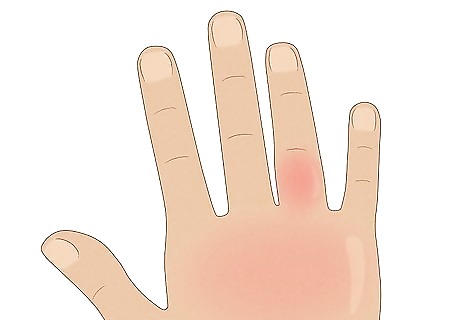
Swelling If your knuckle is broken, it should start to swell a few minutes after the injury. It’ll swell at the point of the break and may spread out to the rest of your hand. You may find it difficult to move your hand if it gets swollen enough. When your knuckle starts to swell, you may notice a new tingling or numbing sensation as the swelling develops around your fracture or break. Take aspirin, ibuprofen, or another over-the-counter pain medication to decrease the swelling and deal with the pain. Apply ice to the injury early to help alleviate swelling. Wrap an ice pack with a paper towel and apply it to your knuckle or use a bag of frozen vegetables. Keep the ice pack on for up to 20 minutes at a time.
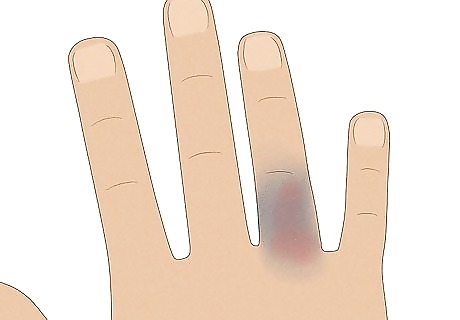
Rapid bruising A bruise from a broken finger will appear much faster than a normal bruise. As blood rushes into your injury, the area will begin to discolor within a matter of minutes. Bruising will also make your injury very tender. It will likely hurt to even touch a broken knuckle. There are cases of bones breaking without any bruising present, but they are rare. Keep your hand elevated to decrease bruising. Keeping your hand above your heart will allow the blood to flow away from the injury.
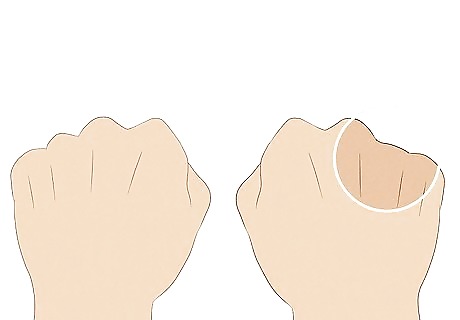
Sunken knuckle A surefire way to tell if you have a broken knuckle is to see if it has sunk beneath your other knuckles. If you can, curl your injured hand into a fist and look at your knuckles. They should stick out. If there is one knuckle that you can’t see, then at least one the finger bones around the joint is definitely broken. The fracture may affect the position or angulation of your finger, causing it to stick out at a strange angle.
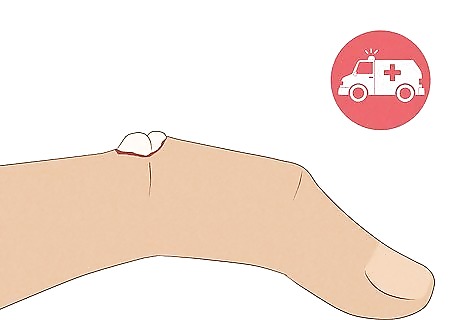
Visible bone If your bone is sticking through your skin, you have an open fracture and you must go to the emergency room ASAP. For now, wash the entire area with antiseptic soap. It will be easy for any open wounds around your broken bone to become infected which will make the injury much more complicated to treat. Make sure to dry your wound completely as moisture makes it easier for bacteria to grow. You can also cover the wound with a clean dressing to prevent infection. Remove any loose pieces of material from the injury. If there is an impaled object in your knuckle, leave it in place for the doctors to remove in the hospital.
Mobility Tests
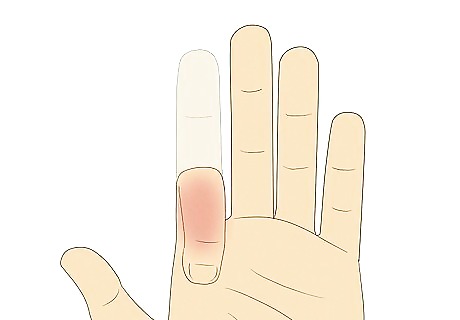
Bend your finger to determine if you can move it like normal. Don’t do this if your finger hurts so badly that moving or touching it at all is painful. After the initial pain subsides, try to bend your injured finger to check for dislocation or malrotation of your knuckle. If your finger is dislocated or fractured, you may not be able to bend it at all. If you can bend it and the pain increases, it’s likely broken. You may experience malrotation, which is where your finger is twisted in a direction that doesn’t match your other fingers. If your bone is malrotated, you will need a doctor to reset it.
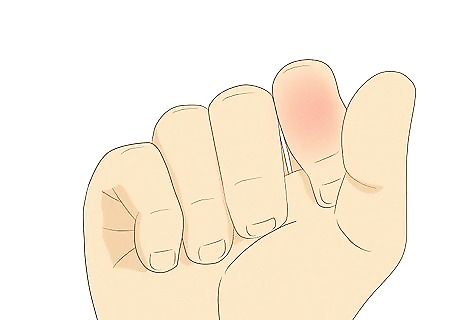
Make a fist to spot any misaligned or deformed bones. If your knuckle is broken, it will be very difficult for you to close your hand, but it may not be impossible. Making a fist will help you spot dislocated bones and determine the severity of your injury. If you can make a fist, and your knuckle is broken, your injured finger may not align properly with the rest of your fingers. Don’t push yourself. If you try too hard to fight through the pain and make a fist, you could injure or dislocate your knuckle further.
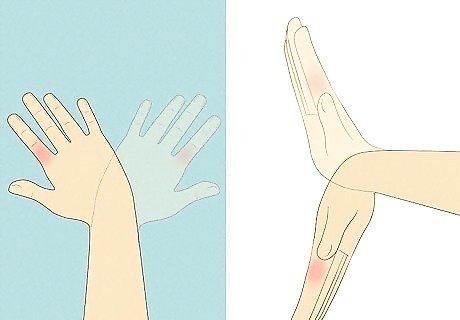
Rotate your wrist to check if you feel pain in your fingers. Your knuckle is at the top of your metacarpal bone. The bottom of your metacarpal bone is connected to your carpus (aka the wrist bone). Because these bones are all connected, a broken knuckle can affect the mobility of your wrist. Move your wrist from side to side and up and down. If you feel a sharp pain shoot through your hand, you most likely have a severe broken knuckle. This is a good way to test your finger for a break if you can’t physically move the finger itself.

See a doctor to get treatment for a broken, fractured, or dislocated finger. The fact that you’re here is a sign you need to see a doctor. However, this may not be an emergency if you can handle the pain. Still, see a doctor in the next few days to get an X-ray and treatment. You will probably have to wear a splint or brace for a few weeks until the knuckle heals. Casts are not often necessary for breaks in the hand and fingers. In extreme cases, you may need surgery to reset the position of a bone or repair it.




















Comments
0 comment